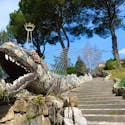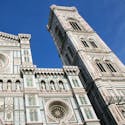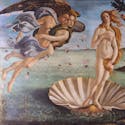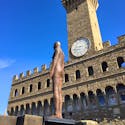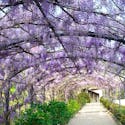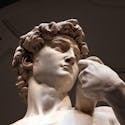Enjoying the Outdoors in Florence
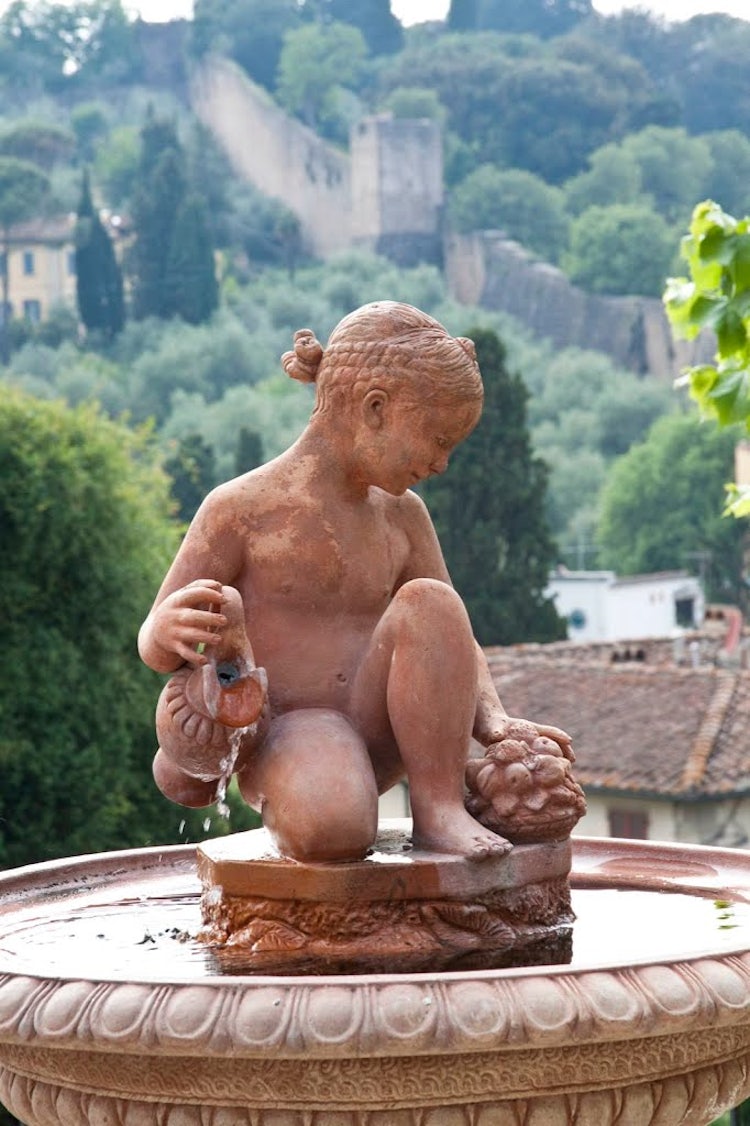 View Florence's old city walls from the Rose Garden
View Florence's old city walls from the Rose GardenAt first glance, when you arrive in Florence it might seem like everything is made out of stone. There is decidely a lack of trees and general "green" in the city center where you are surrounded by many "tower" buildings and majestic mansions.
As part of your visit to Florence, plan to take breaks in between visits to museums and churches and spending some time outdoors. Where? The piazzas or squares in front of churches offers a quick break, but how about including some time in Florence's most beautiful gardens for a real break? There are many small gardens in the center, most of them hidden away in courtyards away from our eyes as they are private. No matter, there are still many beautiful gardens to discover, explore and enjoy right in the center - we're here to help you find them!
The best time to see some of these gardens is obviously in the spring, when they are at their best and flowers are in bloom, but you can fully enjoy them anytime the weather is warm and dry. May, in particular, is the best month to visit the first two of the gardens below as they are dedicated to roses and irises and this is when they color the gardens with their scent and colored petals. In any case, whatever time of the year you are in the city of Florence, here's our suggestions for 6 of the most beautiful and easiest to reach gardens. Mix one, two or all between your visits to museums and churches!
The Rose Garden
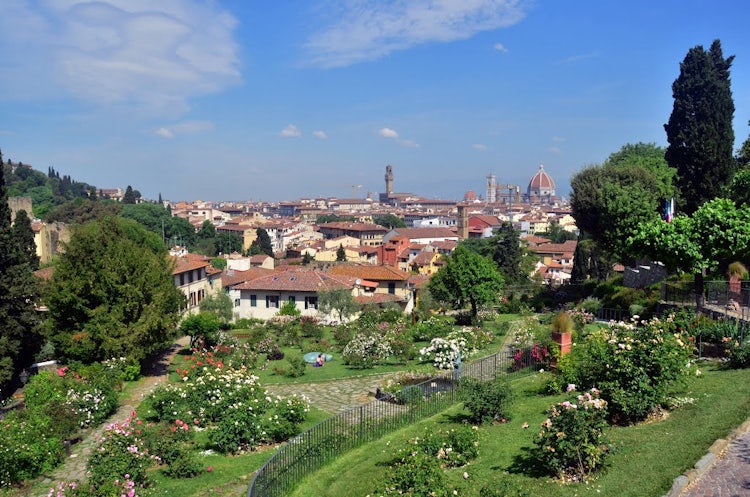
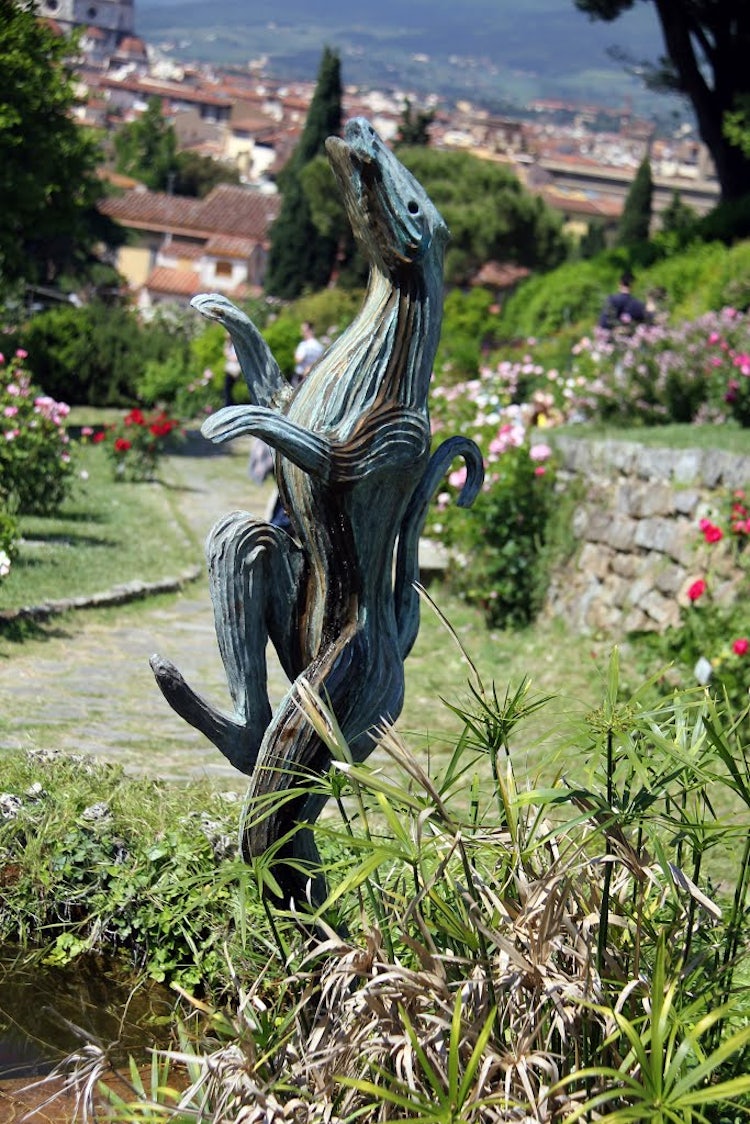
Located below and to the left side of Piazzale Michelangelo facing the city, the Rose Garden is ideal for taking a break from museums while enjoying a marvelous panoramic view of Florence. The best time to visit is in May and June when the over 350 varieties of roses planted here are in bloom but there are also many other plants, including lemon trees and a Japanese Garden (added in 1998, the Japanese Shorai Oasis was given to Florence by its twin city Kyoto) that make the garden enjoyable year round. There are also 12 lovely sculptures by Belgian artist Jean-Michel Folon donated by his widow to the city and placed here in 2011 which enhance the visit to the garden. Before then, the garden was only open in May and June when the roses were in bloom so this recent addition of sculptures has changed the garden for the better from all points of view!
Hours & How to get there
Free entrance - open every day from 9am to sunset
You can get there by foot by passing through Piazza San Miniato in the San Niccolò neighborhood below or take bus #12 or #13 in direction Piazzale Michelangelo, then continue the remaining short distance on foot. See map below to see entrances.
There are 3 entrances to the garden: a small gate from Viale Poggi right below the Piazzale, while the main entrance is along the stairs (which is also a "Via Crucis" up to the Church of San Salvatore al Monte) coming up from San Niccolò below and another small gate at the intersection of Via dei Bastioni and the Via del Monte alle Croci.
The garden is accessible to families, even with strollers (pushchairs) as the main paths are flat. There are a few steps to be navigated as the garden is terraced but overall a great place to sit on the grass and let kids run free (the entire garden is walled).
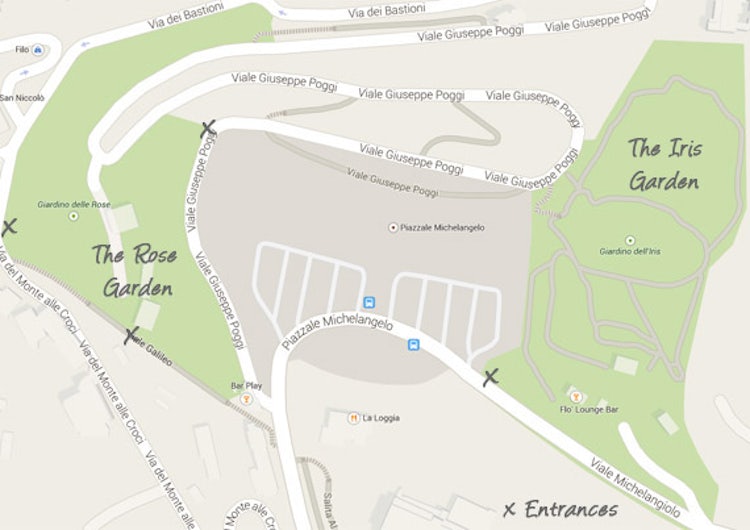
While Piazzale Michelangelo offers a great panoramic view of the city, half of it is a parking lot. No matter, as you can see from the map above it is surrounded by two of the most beautiful gardens in Florence, the Rose and Iris gardens, which can be visited for free!
The Iris Garden
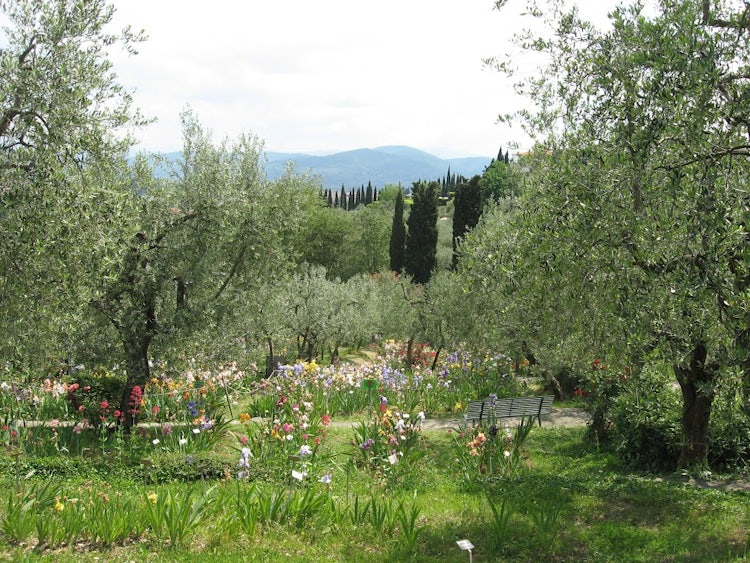
The iris, commonly called giglio or giaggiolo in Italian, is the symbol for the city of Florence. With over 200 species, the Iris Garden offers the chance to view the spectacular wonder when the flowers bloom in spring. This generally occurs in May so we suggest you seek this little gem out as part of your visit during this time of year. Located on the hillside right next to Piazzale Michelangelo (entrance on the corner with Viale Michelangelo), you'll be able to enjoy a wonderful panorama of the city, the flowers and a bit of "countryside" feel.
Hours & How to get there
Open from April 25th - May 20th everyday, including holidays
Hours:
every day from 10am to 6pm (last entrance 30 min before closing time)
Bus 12 or 13 or walk up from the Arno from the San Niccolo tower
More details on the official site.
In May, the Italian Iris Society which created and runs the garden also holds the annual International Competition which elects the most beautiful iris hybrid for the year. The garden spreads out over 2.5 hectares and contains the permanent exhibition of Tall and Border Bearded Irises which have been sent for the various editions of the International Competition. There is a pond for the cultivation of aquatic varieties, ornamental plants of various types, spontaneous species and olive trees.
Entrance to this garden is also free so, weather permitting, take a stroll up the Piazzale and enjoy the outdoors and the view!
The Bardini Garden
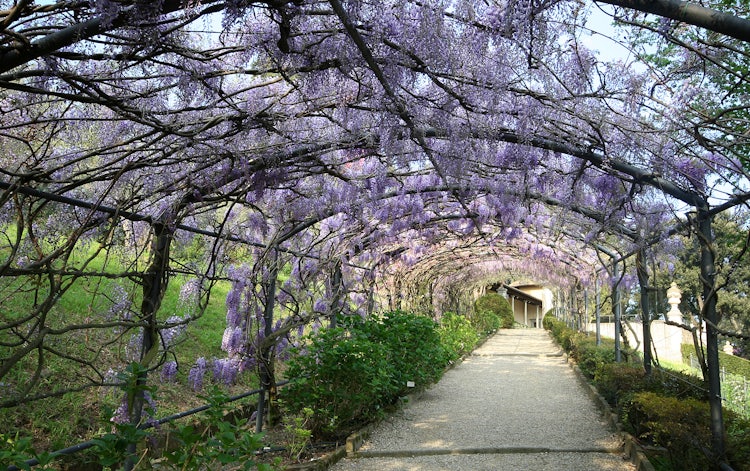
If you are walking along the Arno between Ponte Vecchio and the Uffizi Gallery and glance across the river, you will see a beautiful terraced garden: this is the Bardini Garden. Not many know it can be visited since it was in terrible condition and only the creation of a foundation to restore the garden and villa (and over 5 years of work) made it possible for the garden to open to the public in 2010.
Hours & How to get there
Check out our article on the Bardini garden for more information
Being closer to Ponte Vecchio, one could claim it has a better view of the city than the one you enjoy from the Piazzale Michelangelo and for this reason its popularity is increasing. The garden belonged to the Mozzi family from the 13th century (the oldest parts are closest to the palazzo below) and in the 18th century the Baroque staircase and statues were added when the estate extended up the hill to the walls of the city. The villa, garden and other palaces in the area were acquired by the antiquarian Stefano Bardini in the early 20th century who also enlarged the villa at the top, called Belvedere where he lived with his family (the Bardini Museum is in the piazza below near the Arno in a separate palazzo).
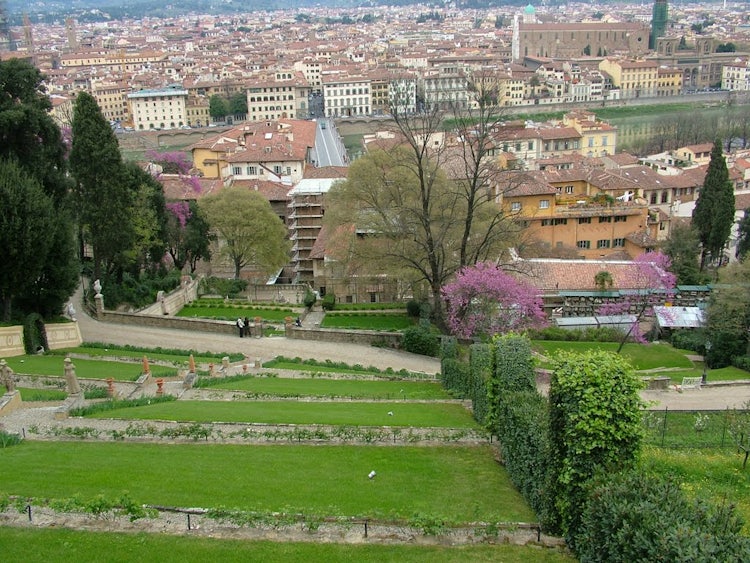
View from the Bardini garden and its terraces
The beautiful terraces and top "belvedere" offer extraordinary views of Florence, while the villa today hosts both a permanent collection of works by Pietro Annigoni and temporary exhibits year round. There is a cafe for refreshments but you can also enjoy a discreet picnic along the benches spread out over the garden while enjoying the view.

Boboli Gardens
 View from the Kaffehaus inside the Boboli Gardens
View from the Kaffehaus inside the Boboli GardensThe beautiful Boboli Gardens are spread out over 111 acres and were built over four centuries behind the Palazzo Pitti.
Hours & How to get there
Check out hours, costs and more on our article on the Boboli Gardens.They are definitely a break from museums, but themselves house many sculptures, fountains and others works that merit being sought after and admired. While bringing food and picnics are not encouraged, you can still enjoy a discreet snack in the many "hidden" areas of the park. One of the special moments inside the park is at 12 noon, when all the city bells ring the hour. The chimes float into the garden and create an enchanted atmosphere.
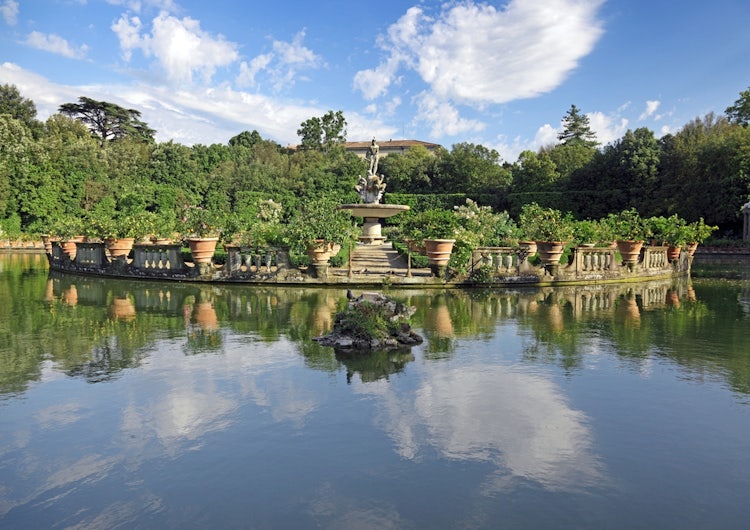 The "pond" at the end closest to Porta Romana
The "pond" at the end closest to Porta RomanaThe Botanical Gardens "Orto dei Semplici"

Florence's Botanical Garden, born in 1545 as a garden for medicinal plants (called the "simple" ones), is one of the oldest botanical gardens in the world.
The garden extends over 2 hectares, with some covered areas including greenhouses. The collections include new plantings of hydrangeas, azaleas, bushes and trees since the reopening this spring after the destruction of the small tornado that hit Florence in September 19, 2014. The carnivore plants are in new glass cases, and three new flowerbeds are in place thanks to contributions by the public made on PlanBee.
Hours & How to get there
Via Pier Antonio Micheli, 3
Open: every day except Mondays, including holidays 10am - 7pm
Closed: Mondays, January 1, Easter, May 1, August 15, December 25
Check out the official site for other details, including entrance fee.
The garden is slowly returning to normal and there are a lot of plants to discover from all over the world, from the succulents to water plants, an ancient collection of citrus plants, ancient and modern rose bushes, medicinal and poisonous plants, a small Zen garden and an educational area on carnivorous plants. There are numerous centennial trees, although many were damaged last fall. Highly recommend a visit, as this garden is just behind Piazza San Marco and Piazza SS Annunziata, so very central in Florence. The entire garden is flat, and all of the paths can easily be navigated with a stroller. Make sure to pass note the "original" gates with the Medici emblem on the side of the garden fronting on Via La Pira.
Le Cascine Park
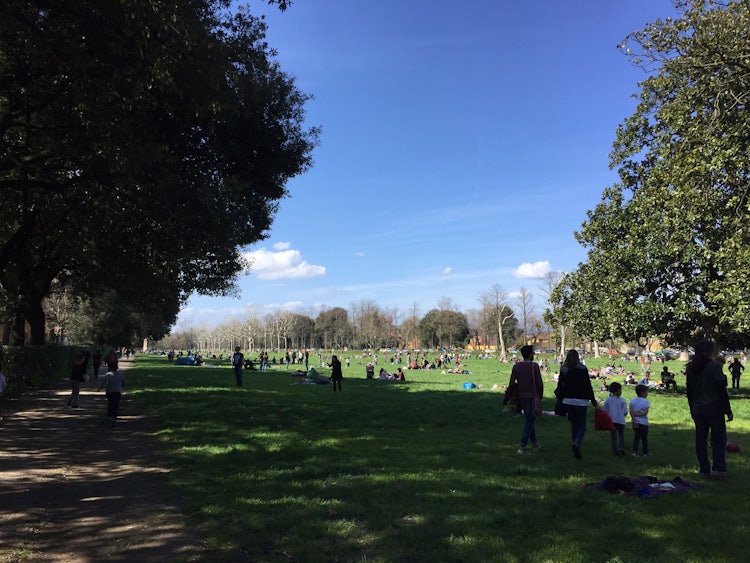
Le Cascine is not a garden, it is a huge park but as it is a huge area in Florence, we could not leave it out. Le Cascine is the green lung for the city of Florence, and even if it just outside of the historical center, you might find your way here if you stay longer than a few days. If you want to immerse yourself in local life, head to Le Cascine on a Tuesday morning where you'll find Florence's largest weekly open-air market.
Hours & How to get there
In the Piazzale delle Cascine, you'll find a visitor's center where you can pick up maps and learn more about the services offered within the park.
Free entrance
You can walk or bike to Le Cascine, 15 minutes or less from SMN.
It can also be reached by tram T1 or bus 17C
parcodellecascine.comune.fi.it
Le Cascine is also the site for many large-scale events, from flower expos to street market festivals to local political gatherings to medieval fairs. It has a large playground for kids of all ages, large tree-lined avenues perfect for cycling, huge open meadows lined with trees where you (and the kids) can run around, picnic on the grass or just lie around. Enjoy a walk or bike ride along the river, or an early morning run. It also has a large public swimming pool and lots of sport fields, including two hippodromes, and at least two large places where you can eat at at each end of the park. You'll also find Florence's new Opera house right near the entrance to Le Cascine coming from the center.
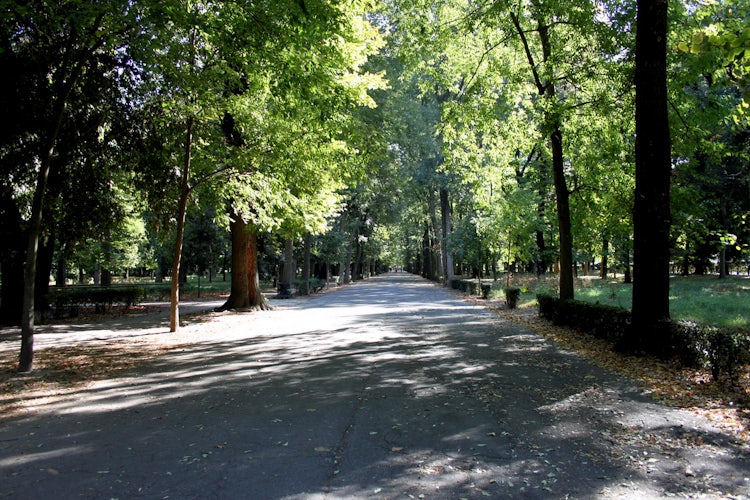
Le Cascine is a historical, monumental park that extends over 160 hectares of land (395 acres) along the right bank of the Arno river on the western edge of Florence. This area used to be out of the city and considered "hunting" ground for the Medici in the 16th century. It only became a public park toward the end of the 19th century. Today, the city has a "master" plan to update and revamp the services offered throughout the park by 2020 so that everyone can enjoy time outdoors at Le Cascine; you can already start enjoying the new "face" of the park, including accessing it by Florence's modern tram line.


